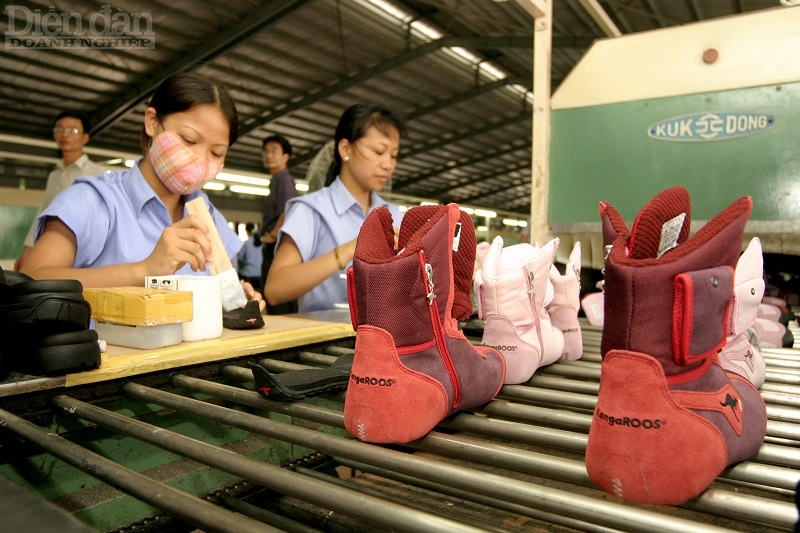Two scenarios for Vietnam's GDP growth
Wed, 28 Jun 2023 22:52:00 | Print | Email Share:
According to Saigon Ratings, Vietam's GDP growth for the entire year 2023 would lean towards one of two scenarios based on expected economic indicators for the first six months of the year and plausible projections.

Positive signs
In the first six months of 2023, the global economic and political climate was volatile, providing several difficulties to the local economy. Continued problems, stagnation, and rising job losses in the industrial sector, notably in processing and manufacturing industries such as textiles, footwear, electronic components, and wood processing, are among the primary issues.
Furthermore, market confidence and the soundness of domestic enterprises have weakened, as seen by credit growth that has been slow. As of May 2023, new credit has risen by just around 3.17% since the end of 2022, which is less than half the growth rate seen in the first five months of 2022 (8.04%). Furthermore, the non-performing loan ratio tends to rise owing to a variety of local and foreign variables. The real estate and foreign direct investment markets continue to encounter several challenges.
However, the economy showed some encouraging signals in the first six months of 2023:
First, inflation remains under control owing to the government's regulatory measures and a major drop in global gasoline costs. The primary drivers of inflation are the prices of construction materials, food, tuition fees, tourism services, and residential power, whereas fuel prices, gas, and postal and telecommunications services have all played a significant influence in lowering the consumer price index (CPI).
Second, overall retail sales of commodities and income from consumer services continue to rise, demonstrating that there is still a need for critical goods and consumer goods while the population recovers from the epidemic. They climbed by 12.6% in the first five months of 2023 compared to the same period last year (9.3% in the same period in 2022).
Third, public investment has grown compared to the same period last year, indicating that the government's efforts to raise public investment are beginning to bear fruit. In the first five months of 2023, budgeted investment reached 25.5% of the annual plan, up 18.4% from the same time in 2022 (24.9% of the annual plan, up 10.8% from the same period in 2021).
Fourth, the exchange rate is steady, and interest rates have begun to fall. While central banks across the world prefer to raise or maintain interest rates, the State Bank of Vietnam has cut the refinancing rate from 6% to 4.5% and the discount rate from 4.5% to 3% four times in a row. The State Bank of Vietnam's monetary policy relaxation seeks to enhance economic liquidity, solve a portion of the capital shortfall, and promote economic growth.

2 GDP growth scenarios
With two scenarios in mind, the analysts at Saigon Ratings predict that meeting the targeted GDP growth target for the entire year 2023 (6.5%) will be tough.
(i) Promising scenario: GDP growth of 5.5% to 6.0%. Global fiscal and monetary policies are becoming less restrictive, laying the groundwork for a solid economic rebound in the second half of the year. Domestically, rapid distribution of governmental investment packages generates momentum, which combines with a rebound in private sector capital inflows, foreign direct investment (FDI), and rising international demand in the second half of 2023.
(ii) Worst-case scenario: GDP growth of 5.0% to 5.5%. Major economies throughout the world continue to struggle, resulting in a drop in total demand on the global market. Global inflation persists, causing central banks throughout the world to maintain tighter monetary policies for longer than predicted. Domestically, macroeconomic risks rise as the economic recovery program is implemented more slowly than expected.
Furthermore, average inflation is projected to be greater than in 2022, but still within the goal range (no more than 4.5%). Several pressures contribute to inflationary risks: (i) the planned adjustment of market-based prices for government-managed goods and services, (ii) the second-round effects of increased prices for input materials, energy, and interest rates over the past period, (iii) the strong implementation of recovery support programs, which may increase money supply, and (iv) the adjustment of base salaries for officials and civil servants, which will be increased beginning July 1.
However, there are many factors supporting inflation stability: (i) it is unlikely that energy prices will rise as sharply as in 2022, (ii) declining consumer confidence globally reduces the pressure of "imported inflation," and (iii) the value-added tax will be reduced from 10% to 8% from July 1, 2023 to December 31, 2023.
By: Business Forum Magazine
Source: https://en.diendandoanhnghiep.vn/two-scenarios-fornbsp-vietnam039-s-gdp-growth-n37567.html
---------------------------------------------
Same category News :













